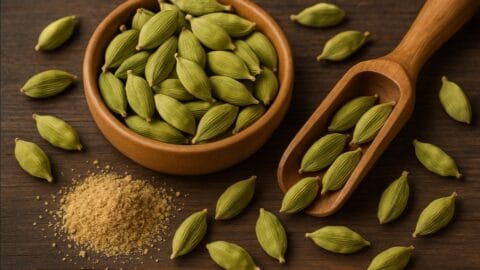Bloating, gas, and indigestion can turn a good day into an uncomfortable one. But did you know that your kitchen already holds a powerful digestive aid? Meet Asafoetida, more commonly known as Hing. This pungent-smelling spice has been a staple in Indian cooking and Ayurveda for centuries — not just for its unique flavor but for its incredible digestive benefits.
What is Asafoetida (Hing)?
Asafoetida, or Hing, is a gum resin extracted from the roots of Ferula plants. In its raw form, it has a strong, sulfurous smell, but when cooked, Hing imparts a smooth, umami-like flavor that enhances curries, dals, and lentil dishes. Beyond its culinary uses, Hing is treasured in Ayurveda as a natural carminative — a substance that helps expel gas from the digestive system.
How Hing Helps Reduce Bloating and Gas
If you often struggle with bloating after meals, adding a pinch of Hing can make a world of difference. Here’s why:
✅ Relaxes Intestinal Muscles: Asafoetida works by relaxing the intestinal walls, allowing trapped gas to pass smoothly.
✅ Stimulates Digestive Enzymes: It encourages the secretion of digestive juices and enzymes, which help break down complex foods, especially lentils and cruciferous veggies that can cause gas.
✅ Prevents Fermentation in the Gut: Hing reduces the fermentation of food in the gut, which is a common cause of bloating.
✅ Balances Vata Dosha: In Ayurveda, excess gas and bloating are linked to an aggravated Vata dosha. Hing pacifies Vata and promotes a healthy digestive fire (Agni).
How to Use Asafoetida for Bloating and Gas Relief
The beauty of Hing is that you only need a tiny amount. Here are simple ways to incorporate it:
- Tempering (Tadka): The classic method — heat ghee or oil, add cumin or mustard seeds, and sprinkle in a pinch of Hing. Pour this over cooked dal, beans, or veggies.
- In Herbal Teas: Mix a pinch of Hing with warm water, lemon, and a bit of ginger for a quick digestive drink.
- Homemade Spice Blends: Add Hing to spice blends for lentils and beans to make them more gut-friendly.
Tip: Always store Hing in an airtight container because its strong aroma can affect other spices!
Other Health Benefits of Asafoetida
Besides fighting bloating and gas, Hing offers more wellness perks:
- Natural Antimicrobial: Helps combat harmful gut bacteria.
- Anti-inflammatory: Eases stomach cramps and reduces inflammation.
- Menstrual Relief: In Ayurveda, Hing is also used to ease period cramps and abdominal pain.
Precautions When Using Hing
- Always use Hing in moderation — its strong sulfur compounds can be overpowering.
- If you’re pregnant, consult your healthcare provider before adding Hing to your diet.
- Choose compounded Hing powder (mixed with rice flour or gum arabic) for safe culinary use.
Final Thoughts
Nature often provides the best remedies — and Asafoetida is proof of that. Just a pinch of Hing in your meals can keep your digestive system calm, your tummy happy, and embarrassing gas at bay. So, the next time you cook lentils or beans, don’t forget this secret Ayurvedic hero.
FAQs About Hing for Digestion
Q: Can I take Hing every day?
A: Yes, small culinary amounts daily are safe for most people and help keep digestion smooth.
Q: Does Hing help with IBS symptoms?
A: Some people with IBS find Hing helpful for gas and bloating, but always consult a doctor first.
Q: Can Hing help with other stomach problems?
A: Yes! It may help with mild indigestion, cramps, and loss of appetite.
Ready to Try Hing for Bloating and Gas?
Add Asafoetida to your pantry and discover the natural way to enjoy meals without the discomfort of bloating or gas. Small spice, big difference!
Did you find this post helpful?
🌿 Share it with friends who struggle with bloating!
✨ Drop your favorite Hing recipes in the comments below!







